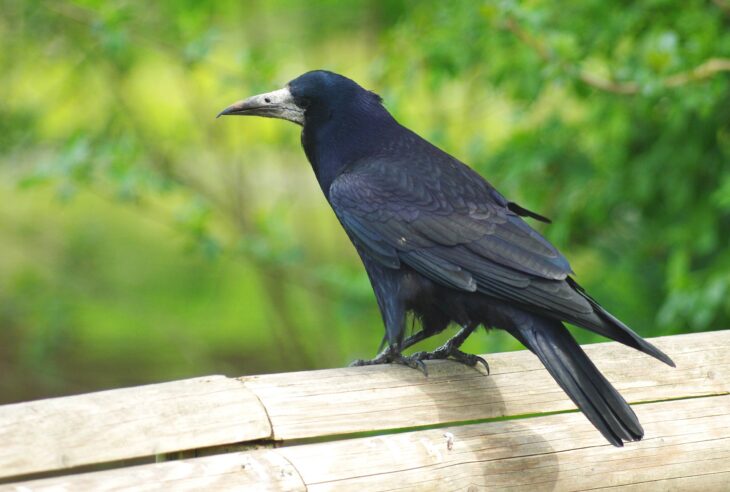The raucous rooks
I am lucky enough to have a back garden where I have found myself spending A LOT more time in because of our current lock-down. I am using this space to drink tea in, eat lunch in and whilst doing this, having a good old spy on what my garden inhabitants are up to at the moment.
One species of particular interest to me is the rook, Corvus frugilegus. They are part of the corvid, or crow family.

Rook: Gillian Day – bigsisterpromo@btinternet.com
One of the most striking features of the adult rook is the bare grey-white patch of bare skin around the base of their bill, which makes it seem longer than it actually is. Their plumage looks black, but may reveal a blue-purple tinge in sunlight. Another thing to look out for is their feathered baggy trousers and shaggy chest feathers.
Their straight pointed bill means they can eat a variety of food such as nuts, seeds, worms, insects and carrion. They are often seen foraging together in parks and on farmland and may be in mixed flocks with other corvids, their cousins, the jackdaw.
I have a collection of rooks who are extremely busy just now, building nests in trees outside my house. They have been there since before I lived here. Living together in their communal rookery, collecting sticks and moss for their nests and cawing away like no-ones business. (also depositing some of their own business on my car during their flights back and forth. Well you have to take the rough with the smooth).
I have also discovered that with a more focussed listening, rooks make calls other than the raspy cawing we are so familiar with. I was quite surprised to hear them making a soft mewing sound, something akin to a raptor call. But there were no birds of prey around. What was going on? We can’t forget that rooks are indeed passerine or perching birds, many of whom are excellent singers. Think of the melodious rich song of the blackbird for instance. Their vocabulary is definitely more complex than I have noticed before. I wonder if these calls I was hearing were used be used for pair bonding or when begging for food.
The following clip shows some interesting rook behaviour as well as a selection of vocalisations. Take note at 1:27 where the rook is softly mewing, as I described earlier.
https://www.youtube.com/watch?v=0JWinWg2ITs
Rook calling: Kees Vanger
If you are able to go outside at the moment, try using all your senses to discover nature. Stop, look, listen, mediate. Is there anything you see in your garden at the moment? What do you know about it? What does it look like, what does it sound like, what behaviours can you observe, what role does it play in the ecosystem? Does it have any interesting folklore or go by any old local names? Immerse yourself and learn about something new.
Even though times are tough at the moment, part of me is glad of the opportunity to slow down and really focus upon the noisy nature on my door step.
Clare Toner: Clyde Valley Ranger
Help protect Scotland’s wildlife
Our work to save Scotland’s wildlife is made possible thanks to the generosity of our members and supporters.
Join today from just £3 a month to help protect the species you love.
Preface
I am lucky enough to have a back garden where I have found myself spending A LOT more time in because of our current lock-down. I am using this space …
